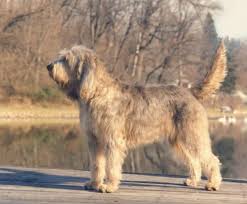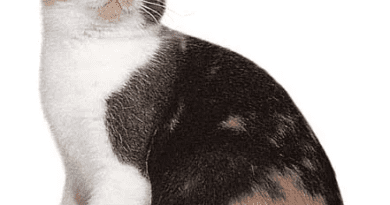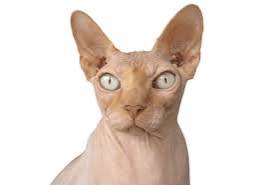Otterhound Dogs: Description and Complete Care Guide
The Otterhound is a truly remarkable breed that combines strength, intelligence, and charm in one magnificent package. With its distinctive appearance, exceptional scenting abilities, and friendly nature, this breed has captured the hearts of dog lovers around the world.
In this article, we will explore the fascinating characteristics and history of the Otterhound, as well as delve into its temperament, care requirements, and the joys of sharing your life with this lovable and unique companion.
Originating from the United Kingdom, the Otterhound has a long and storied history that dates back centuries. As its name suggests, the breed was primarily developed for otter hunting. Otters were once abundant in rivers throughout England, and their pursuit required a dog with exceptional swimming abilities, a keen sense of smell, and the endurance to track and confront these elusive creatures.
The Otterhound’s distinctive features, such as its shaggy double coat, webbed feet, and powerful tail, make it ideally suited for this challenging task.
The Otterhound is a large, robust dog with a noble and commanding presence. Males typically stand between 24 and 27 inches (61-69 cm) at the shoulder, while females are slightly smaller, ranging from 23 to 26 inches (58-66 cm).
The breed’s coat is weather-resistant and dense, consisting of a coarse outer layer and a soft undercoat that provides insulation in cold water. Its unique facial features include expressive eyes, long droopy ears, and a distinct mustache and beard, all of which contribute to its character and charm.
Beyond its physical attributes, the Otterhound possesses a delightful temperament that endears it to both individuals and families alike. Known for its friendly and sociable nature, the Otterhound is generally excellent with children and gets along well with other dogs. While they can be independent thinkers at times, they are also highly intelligent and trainable.
Consistent and patient training methods that incorporate positive reinforcement will yield the best results with this breed. The Otterhound thrives on companionship and should not be left alone for extended periods, as it can become bored and develop undesirable behaviors.
Due to its heritage as a working dog, the Otterhound has a high energy level and requires regular exercise to keep both its body and mind stimulated. Daily walks, playtime, and opportunities to explore nature are essential for this breed’s overall well-being.
Given its exceptional scenting abilities, engaging the Otterhound in scent-based activities such as tracking or search and rescue exercises can be particularly rewarding for both owner and dog. Additionally, swimming is a favorite pastime for this water-loving breed, and access to safe aquatic environments can provide excellent physical exercise and mental stimulation.
Grooming an Otterhound requires dedication, as its dense double coat can easily become matted if not properly maintained. Regular brushing, ideally several times a week, helps prevent tangles and keeps the coat in good condition. During shedding seasons, which occur twice a year, more frequent brushing is necessary to remove loose hair.
The Otterhound’s ears also require special attention to prevent infections. Regular cleaning and drying are essential to maintain ear health.
While the Otterhound is a relatively healthy breed, like all dogs, it can be prone to certain health conditions. These may include hip dysplasia, elbow dysplasia, bloat, and certain eye disorders.
Responsible breeders perform health screenings on their breeding stock to minimize the risk of passing on genetic conditions. It is crucial for potential owners to choose a reputable breeder who prioritizes the health and well-being of their dogs.
In addition, the Otterhound is a captivating and charismatic breed that possesses a unique blend of athleticism, intelligence, and affability. Its history as an otter hunter has left a lasting legacy, and its distinctive appearance and loving temperament make it an exceptional companion for individuals and families who appreciate its special qualities.
With proper care, training, and exercise, the Otterhound can flourish in a loving home and bring endless joy and companionship to its lucky owners.
Read Also: What are Fish Meristic Characteristics and the Basic Rules of Meristic Features?
History and Origin of the Otterhound Dogs

The history and origin of the Otterhound can be traced back to medieval England, where it was developed for the purpose of otter hunting. Otters were once abundant in the rivers and waterways of the British Isles, and their pursuit required a specialized dog with exceptional swimming abilities and a keen sense of smell.
The exact lineage of the Otterhound is somewhat uncertain, as records from that era were not meticulously kept. However, it is believed that the breed’s ancestry includes Bloodhounds, various rough-coated scent hounds, and other breeds known for their swimming abilities. These different breeds were likely crossed to create a dog that possessed the necessary attributes for otter hunting.
The Otterhound’s development as a distinct breed gained momentum in the 19th century when otter hunting became a popular sport in England. Packs of Otterhounds were maintained by hunting enthusiasts who dedicated themselves to preserving the breed’s unique characteristics. However, with the decline of otters in the UK due to conservation efforts, the demand for Otterhounds diminished, and the breed faced the risk of extinction.
Fortunately, dedicated breed enthusiasts, including the Otterhound Club in the UK, worked diligently to ensure the breed’s survival. Efforts were made to preserve the breed’s genetic diversity and promote responsible breeding practices. The Otterhound’s numbers gradually increased, albeit still remaining relatively rare today.
Despite its historical significance and intrinsic qualities, the Otterhound remains a relatively lesser-known breed outside of hunting circles. Its numbers are still relatively low, and it is considered a vulnerable breed according to various kennel club designations. However, the Otterhound’s undeniable charm and unique set of skills continue to captivate those who discover its extraordinary qualities.
In recent years, the Otterhound’s role has shifted from that of an otter hunting companion to that of a beloved family pet and show dog. Its friendly nature, intelligence, and distinctive appearance have won the hearts of many dog lovers who appreciate its distinctiveness and versatility. While its hunting instincts may still be present, the modern Otterhound primarily enjoys a life of companionship and the opportunity to participate in various dog sports and activities.
Today, the Otterhound is recognized by various kennel clubs and breed organizations, including the American Kennel Club (AKC) and the Kennel Club (UK). These organizations work to preserve the breed’s standards and promote responsible breeding practices to maintain the breed’s health and vitality.
However, the Otterhound’s history and origin are deeply intertwined with the pursuit of otter hunting in medieval England. While its hunting days may be in the past, the breed’s unique characteristics and rich heritage continue to fascinate and delight dog enthusiasts around the world.
Health Issues and Lifespan of the Otterhound Dogs
Like many dog breeds, the Otterhound is prone to certain health issues. Responsible breeders strive to minimize the occurrence of these conditions through health testing and selective breeding. It’s important for potential owners to be aware of these health concerns and to work with reputable breeders who prioritize the health and well-being of their dogs.
Some common health issues in Otterhounds include:
Hip Dysplasia: This is a genetic condition where the hip joint doesn’t develop properly, leading to discomfort, lameness, and arthritis. Regular hip evaluations, such as hip X-rays, can help identify potential issues.
Elbow Dysplasia: Similar to hip dysplasia, elbow dysplasia is a condition where the elbow joint doesn’t form correctly, causing lameness and joint pain. Elbow X-rays can aid in diagnosing and managing this condition.
Bloat (Gastric Dilatation-Volvulus): Bloat is a potentially life-threatening condition where the stomach twists, leading to a blockage of blood flow and gas accumulation. It requires immediate veterinary attention. Feeding multiple small meals and avoiding vigorous exercise after meals can help reduce the risk.
Hypothyroidism: This is a condition where the thyroid gland doesn’t produce enough hormones, resulting in weight gain, lethargy, and skin issues. Regular thyroid function testing can help diagnose and manage this condition.
Progressive Retinal Atrophy (PRA): PRA is a degenerative eye disease that leads to progressive vision loss and eventual blindness. It is essential for breeding dogs to undergo regular eye examinations by a veterinary ophthalmologist to identify carriers of this genetic condition.
Ear Infections: Otterhounds have long, droopy ears that can trap moisture and debris, making them prone to ear infections. Regular ear cleaning and drying are necessary to prevent infections.
It’s important to note that not all Otterhounds will develop these health issues, and responsible breeding practices can help reduce their prevalence. However, potential owners should be aware of these conditions and discuss them with breeders or veterinarians when considering adding an Otterhound to their family.
The average lifespan of an Otterhound is around 10 to 13 years. However, with proper care, nutrition, and a healthy lifestyle, some Otterhounds have been known to live even longer. Regular veterinary check-ups, a balanced diet, exercise, and a loving environment can contribute to a longer and healthier life for an Otterhound.
Remember that each individual dog is unique, and genetics, lifestyle, and environmental factors can influence their overall health and lifespan. Providing a nurturing and attentive environment, along with proactive veterinary care, will help ensure your Otterhound lives a long and fulfilling life.
Read Also: Understanding Fish Identification Process
Otterhound Dog Breed Complete Grooming and Care Guide

Brushing: The Otterhound has a dense, double coat that requires regular brushing to prevent matting and keep it in good condition. Aim to brush your Otterhound at least two to three times a week, using a slicker brush or a pin brush to remove tangles and loose hair.
Bathing: Otterhounds are not high-maintenance when it comes to bathing. They have a natural, water-resistant coat that doesn’t require frequent washing. Aim for bathing your Otterhound every two to three months or as needed, using a dog-specific shampoo that maintains the natural oils of the coat.
Drying: After bathing or swimming, make sure to thoroughly dry your Otterhound’s coat to prevent moisture from becoming trapped and causing skin issues. Use a towel or a blow dryer on a low heat setting to gently dry the coat, paying special attention to the ears and the areas underneath the body.
Ear Care: Otterhounds have long, droopy ears that can be prone to infections. Regular ear cleaning is crucial to maintain ear health. Use a dog-specific ear cleaning solution and gently wipe the outer part of the ear using a cotton ball or a soft cloth. Avoid inserting anything into the ear canal, and consult your veterinarian if you notice any signs of irritation or infection.
Dental Care: Dental hygiene is important for overall health. Brush your Otterhound’s teeth regularly using a dog-specific toothbrush and toothpaste. Introduce tooth brushing gradually and make it a positive experience for your dog. Additionally, provide dental chews or toys designed to promote dental health.
Nail Care: Trim your Otterhound’s nails regularly to prevent overgrowth and discomfort. Use a quality dog nail clipper and be cautious not to cut into the quick, which is the sensitive area inside the nail. If you’re unsure, consult a professional groomer or veterinarian for guidance.
Exercise and Mental Stimulation: Otterhounds are an active and intelligent breed that requires regular exercise and mental stimulation to thrive. Provide daily walks, playtime, and opportunities for exploration in a secure environment. Engage in interactive games, such as puzzle toys or scent-based activities, to challenge their minds and keep them entertained.
Health and Veterinary Care: Schedule regular veterinary check-ups to ensure your Otterhound’s overall health. Keep up with vaccinations, flea and tick prevention, and heartworm medication as recommended by your veterinarian. Discuss any concerns or changes in behavior with your veterinarian promptly.
Nutrition:
Provide a balanced and nutritious diet suitable for your Otterhound’s age, size, and activity level. Consult your veterinarian for guidance on portion sizes, feeding frequency, and selecting high-quality dog food that meets their nutritional needs.
Socialization and Training: Otterhounds are social dogs that thrive on companionship and human interaction. Early socialization with other dogs and exposure to various environments and situations is essential to develop a well-rounded and confident Otterhound.
Positive reinforcement training methods will help mold their behavior and build a strong bond between you and your dog.
Remember, each Otterhound is unique, and their grooming and care needs may vary. Pay attention to your individual dog’s coat condition, health, and behavior, and adjust your grooming routine and care practices accordingly. Providing love, attention, and regular grooming will help keep your Otterhound healthy, happy, and looking their best.
Read Also: Efficient Solutions for Food Waste Disposal









